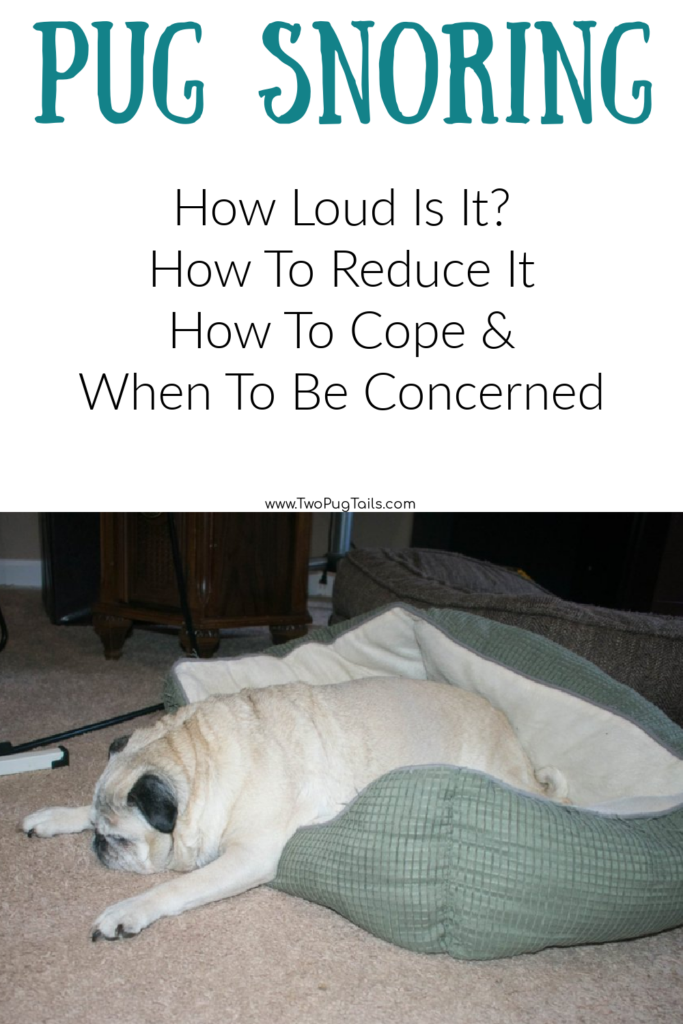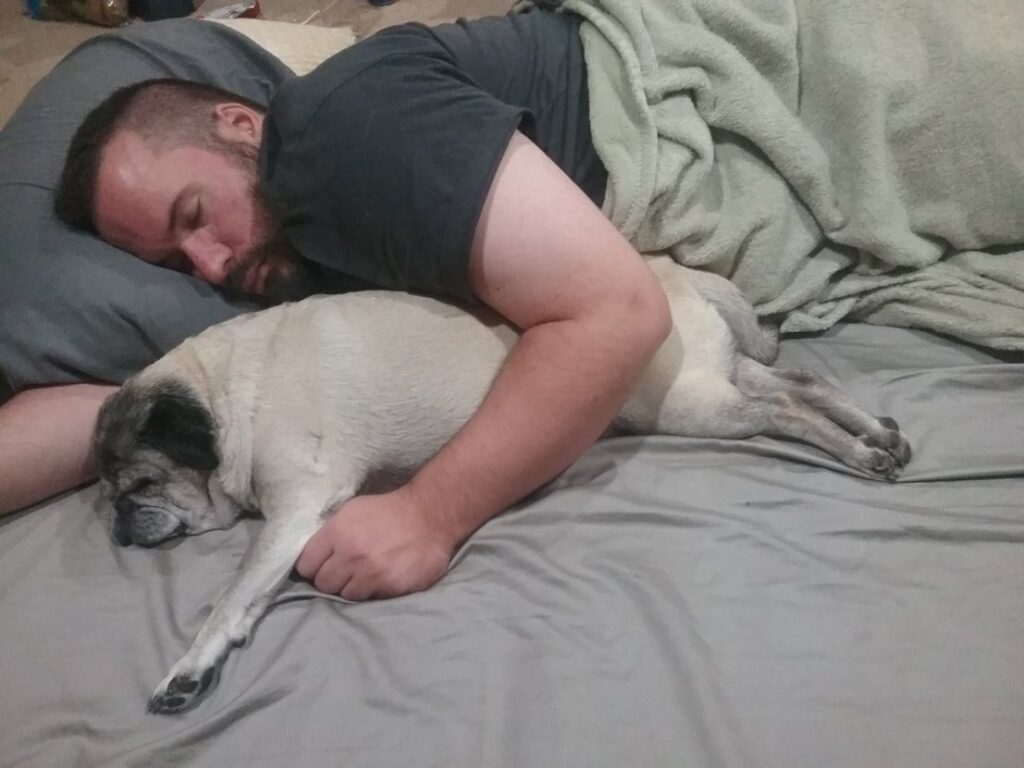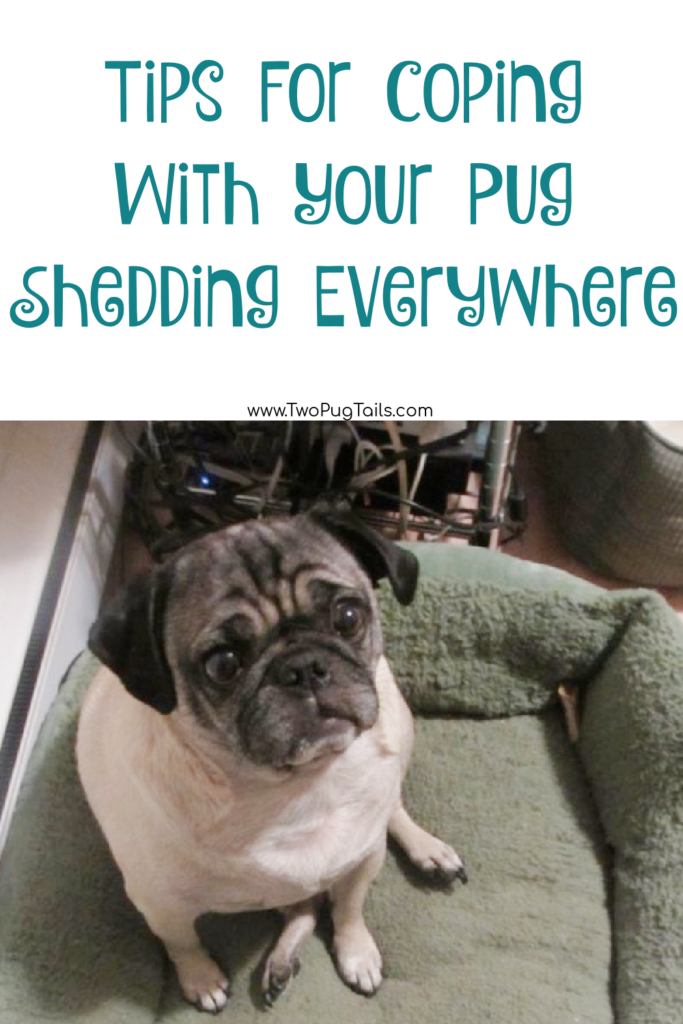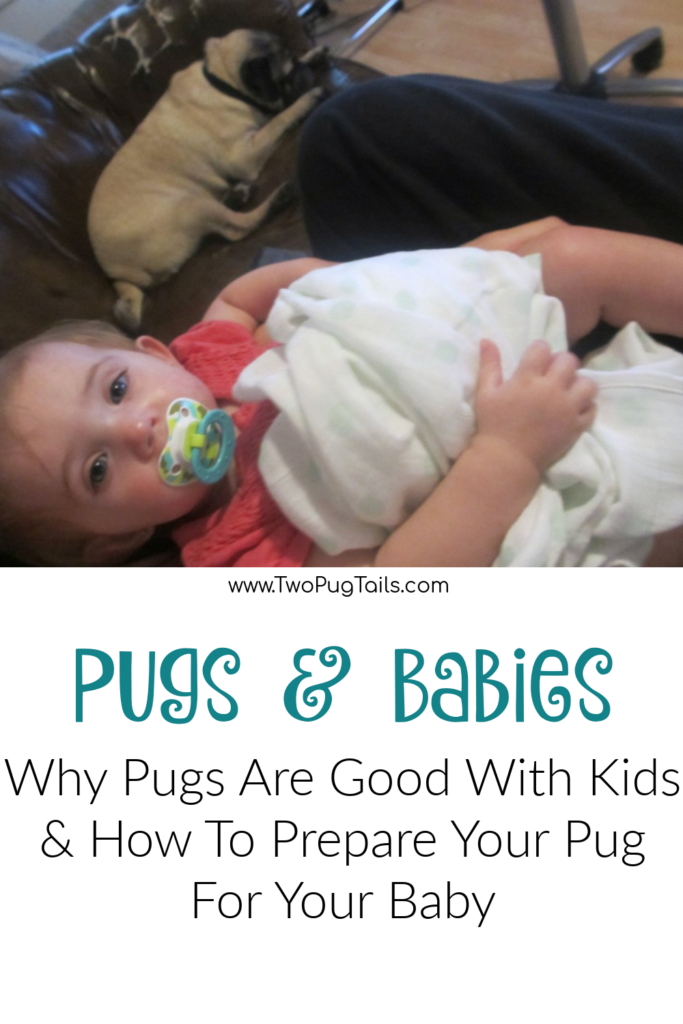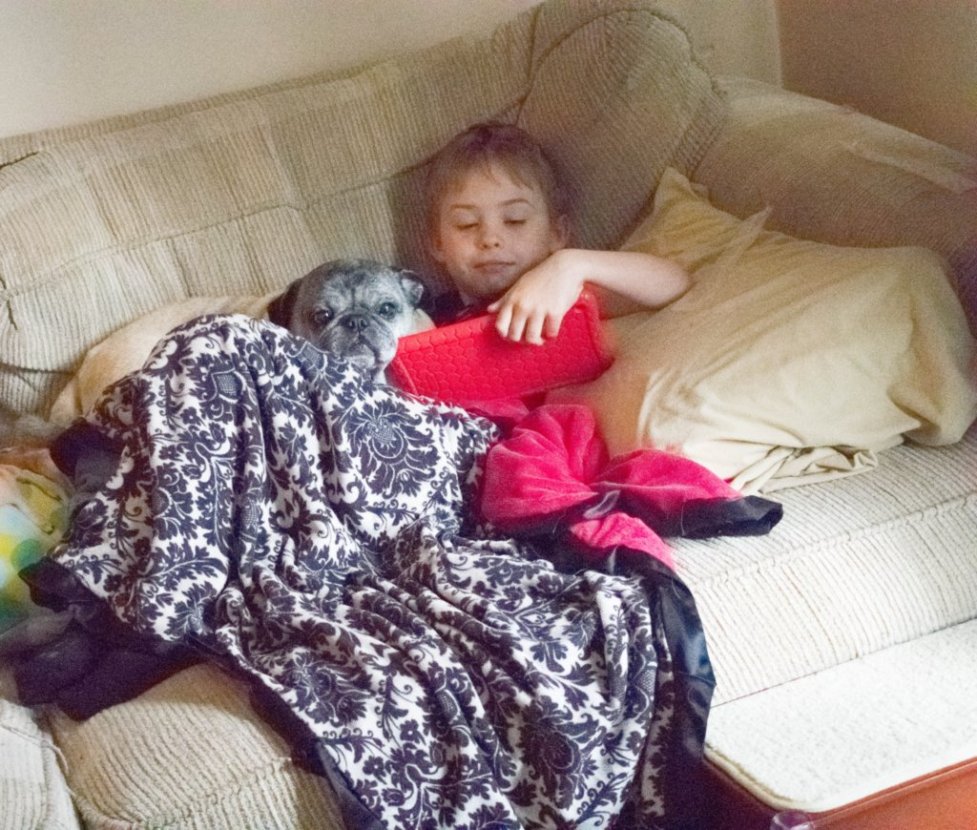There is an affiliate link in this post.
Can Pugs Swim?
Most pugs can swim enough to keep their head above water if they need to. Most pugs are not very good at swimming though, and cannot swim for very long before getting worn out. Some pugs can’t swim at all and will just sink if you try to place them in deep water.
If your pug can swim, still say with them the whole time and don’t expect them to swim very long. They’ll likely tire quickly.
Generally, dogs that swim well are ones with longer legs. Pugs are short-statured compared to their back/body length which puts them at a disadvantage.
Plus, pugs were bred to be lap dogs so they just aren’t very athletic or active in general.
There are some pugs who love swimming though. Even these pugs likely won’t have the stamina to swim very long.
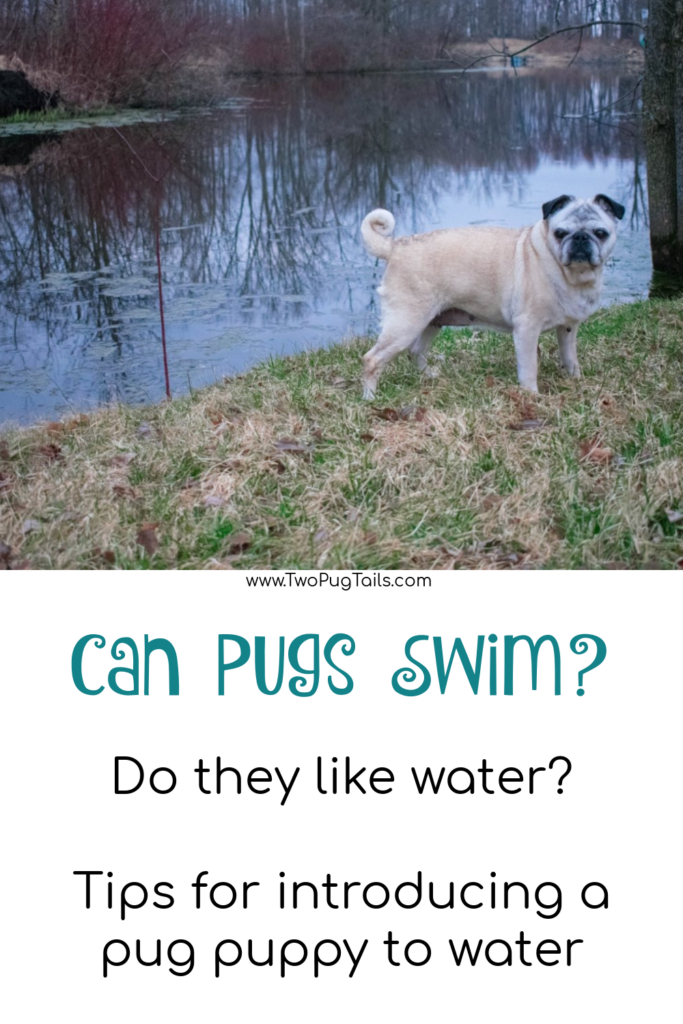
How To Introduce Your Pug To Swimming
Start slow and shallow, and be ready to catch your pug if they sink like a rock. Some pugs will fail to swim the first few attempts but will eventually learn. If you want your pug to swim, keep introducing them to water slowly to see if they can pick up the skill over time. If your pug has a favorite toy or treat, you may try bringing it into the water to help entice them.
If you plan to get a pug puppy, introducing them to swimming as a puppy may increase the odds of them enjoying swimming or being a bit better at swimming when compared to a pug who is introduced to it at an older age.
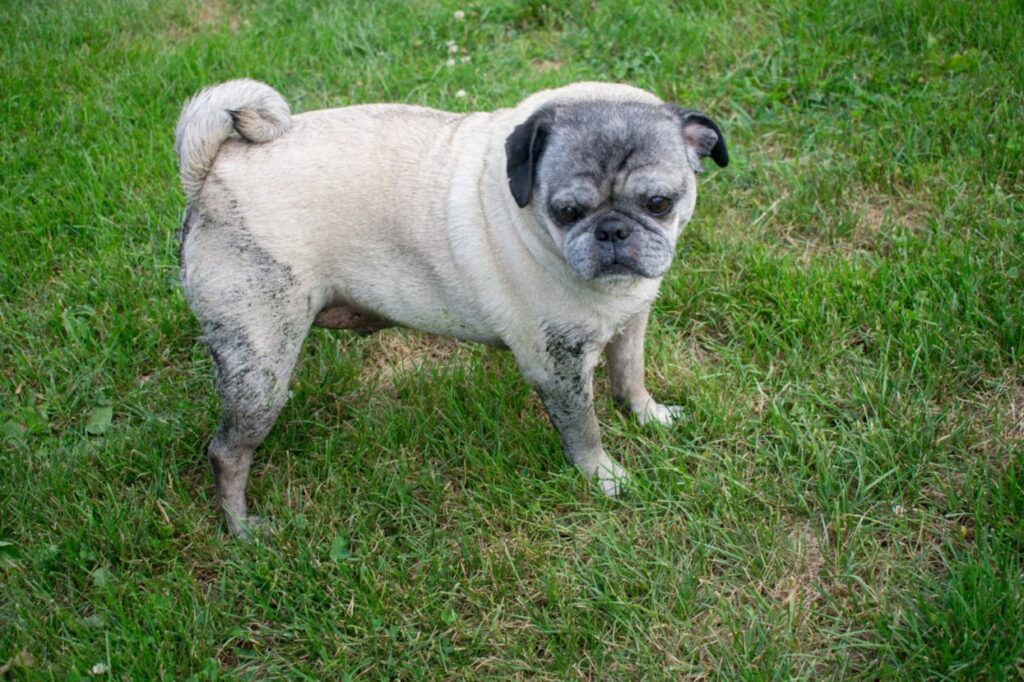
For about five years we lived in a house that had a pond in the side yard. Neither of my pugs ever tried to get into the lake, they’d walk around the edge and avoid the water. One day Frank accidentally fell in, though. He lifted a leg to pee while standing near the edge of the water and lost his balance, so he fell in the water. I was right next to him but he stayed above water until I could step down in and get him out.
Why pugs struggle with swimming
Pugs have a very short snout means they will inhale water very easily. Pugs will tilt their head back when trying to swim, to keep their nasal passageway more open for their nose but this isn’t an ideal angle to have your head at while swimming.
Pugs also struggle with swimming due to their body portions. Compared to many other dog breeds, pugs have short legs and thick bodies. Many pugs have broad shoulders or a “barrel chest” with a smaller back end. This can result in their head and front shoulders being a lot heavier than their back end. This imbalance in how their weight is distributed makes swimming more challenging than it is for dogs who have a more evenly distributed body weight.
Do Pugs Like Water?
This is pretty mixed! Some pugs love water, some hate it, and some are more neutral. Neither of my pugs were excited about water, and both didn’t enjoy bath time but they didn’t kick up a huge fuss about it, either.
If you aren’t sure if your pug will like swimming, see how they react to shallow water. Seeing how your pug responds to water in a hard plastic kiddie pool may be some indication of whether or not they’d enjoy exploring a lake or a pool.
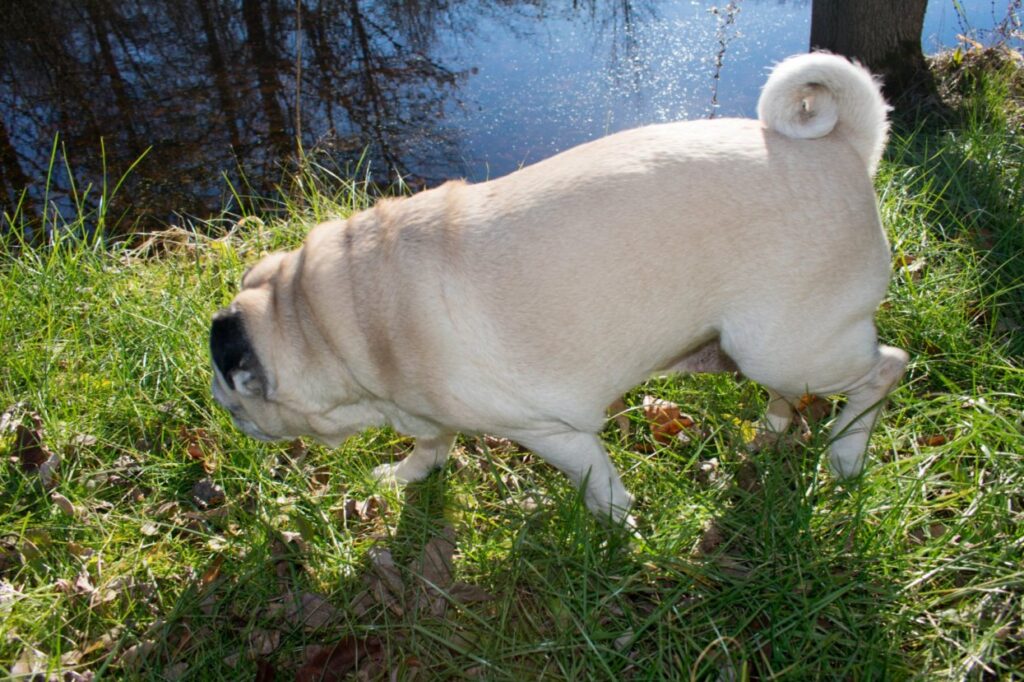
Pug swimming safety tips
Use a life jacket. Even if your pug loves to swim, having a life vest on them is really smart. It will keep them protected if they get too tired to keep swimming.
Be mindful of sensitive skin and pool chemicals. While many dogs can swim in pools without reactions, pugs often have allergies or skin sensitivities. If you introduce your pug to the pool for the first time, check for signs of irritation or allergy while they’re in the water and in the day or so after their swim.
Rinse your dog off with clear water and clean your pug’s wrinkle folds after swimming to ensure any pool chemicals don’t stay trapped against their body.
Only let your pug swim if the air is hot and the water is relatively warm. If it’s not warm enough pugs can get hypothermia.
Don’t let them swim too long. Take them out of the water before you see signs of tiredness. Dogs who get excited to swim or younger pugs with a lot of energy may try to keep swimming longer than they should. For this reason, you don’t necessarily want to trust them to get out of the water when they are getting tired.
If you have a pool at home, keep your pug blocked out of it with a fence or other barrier ot ensure they don’t go swimming alone.
Should you take your pug to the beach?
Pugs don’t tolerate hot weather very well. Most people like to go to the beach when it’s quite hot outside. If you’re planning a trip to the beach on a really hot day, it’s probably best to leave your pug at home. If you take trips to the beach on days that aren’t as hot, your pug may enjoy tagging along.
I have a whole blog post sharing tips & tricks for taking your pug to the beach.
Life Vests For Pugs
There are a variety of dog life jackets out there that will fit pugs. The one I’ve seen discussed most in pug groups is the Outward Hound Dog Life Jacket (link goes to the life vest on amazon). Most pug owners order a size medium for pugs.
Does your pug like to swim? Share stories in the comments!
